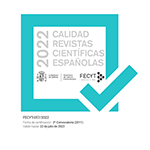Contribution to the floristic and ethnobotanic study of the most utilized medicinal plants in the Sétifian Tell (south of the Tamentout forest) east Algeria
Abstract
This study aims to know the natural heritage of the Tamentout forest through a floristic inventory made in several cantons and to evaluate the uses of traditional medicine in the Sétifian Tell, by conducting an ethnobotanical study at the level of several localities in the region. A quantitative and qualitative analysis of the listed flora identified 101 plant species, which are divided into 38 families and 97 genera. An important representation of the Asteraceae (19%), Fabaceae and Lamiaceae families (11%) are noted. The floristic study emphasizes the presence of several biological types, with a codominance of hemicryptophytes (with 42%) and therophytes (31%). The Mediterranean floristic element constitutes the most important chorological ensemble (52%). The ethnobotanical survey was conducted among 82 informants, with a total of 290 questionnaire cards. All the results were processed by statistical processing software: Excel 2007 and IBM SPSS Statistics version 23. These results showed that the leaves are the most used part (43%) and that the methods of use are prepared in the form of infusion (25%), poultices (18%), and decoction (11%). The most common forms of use are herbal tea (46%), powder (25%), and essential oil (19%). The oral route is the most widely used route of administration (51%). The most common pathologies are those of the digestive system (20%) and the respiratory system (18%). This study made it possible to identify the diversity of the flora of the Tamentout South Slope forest and list its traditional care and consequently to contribute to the conservation of the Mediterranean pharmacopeia that is being lost.
Downloads
Article download
License
Mediterranean Botany is an open access journal to promote global exchange knowledge. It facilitates unrestricted access to its contents from the moment of publication in its electronic edition. The originals published are property of the Universidad Complutense and it is mandatory to cite such source in case of total or partial reproduction. All contents are distributed under a Creative Commons License 4.0 (CC BY 4.0). This circumstance must be expressly stated in this way when necessary. You can check the informative version and legal text of the license.














